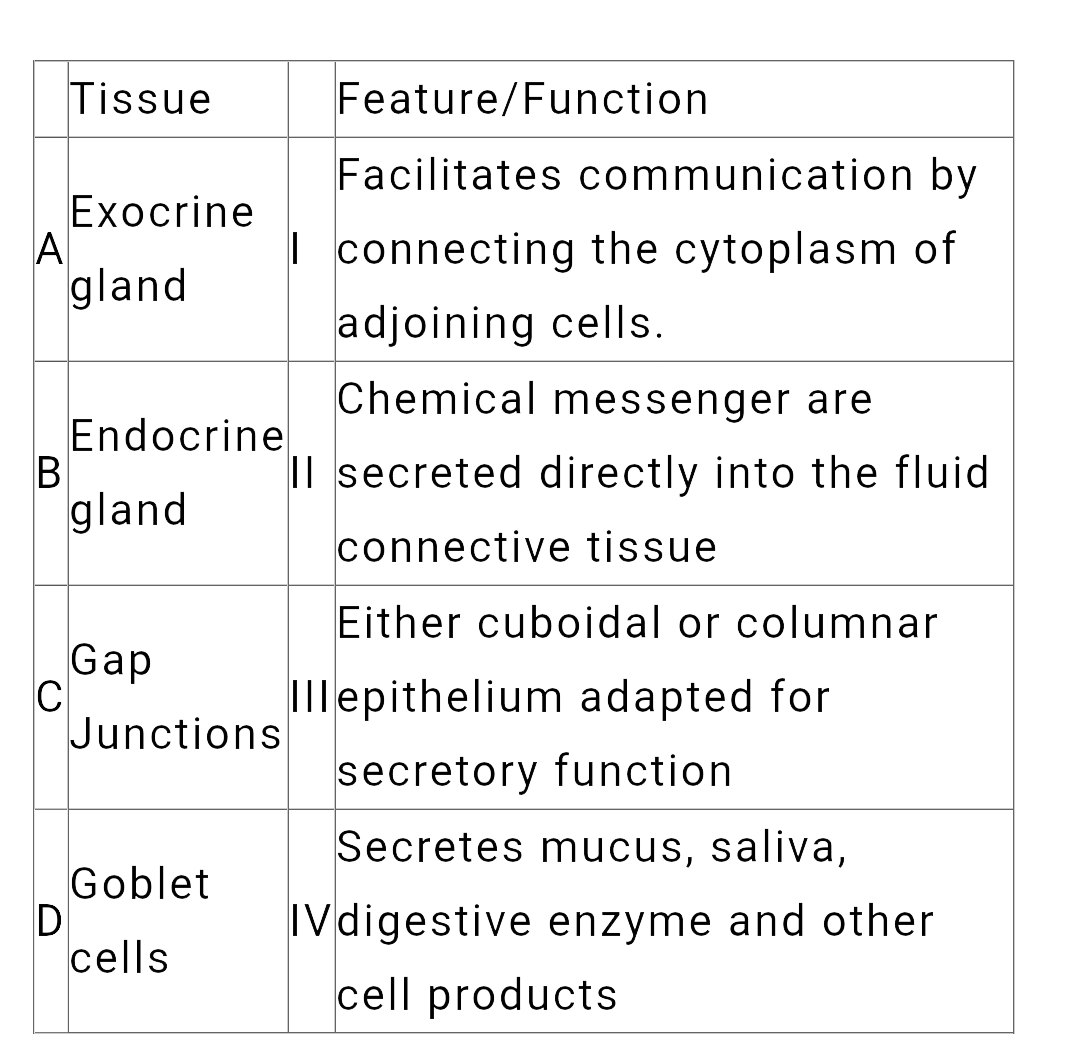Draw unstriated muscle tissue and mention its occurrence, features and function.
Step-by-Step Text Solution
Step 1: Draw Unstriated Muscle Tissue
- Begin by drawing a series of spindle-shaped cells.
- Ensure that the cells are elongated and taper at both ends to represent their fusiform shape.
- Avoid drawing any striations (alternating light and dark bands) within the cells, as unstriated muscle tissue does not have these features.
Step 2: Mention Occurrence
- Unstriated muscle tissue, also known as smooth muscle, is primarily found in the walls of internal organs.
- Common locations include:
- Blood vessels
- Stomach
- Intestines
- Bladder
- Uterus
Step 3: Describe Features
- Shape: Fusiform (spindle-shaped) and tapering at both ends.
- Striations: Lacks striations (no alternating light and dark bands).
- Control: Involuntary (not under conscious control).
- Nucleus: Each cell contains a single, centrally located nucleus.
Step 4: Explain Function
- The primary function of unstriated muscle tissue is contraction.
- This contraction helps in various involuntary movements such as:
- Moving food through the digestive tract (peristalsis).
- Regulating blood flow by constricting or dilating blood vessels.
- Controlling the expulsion of urine from the bladder.
- Begin by drawing a series of spindle-shaped cells.
- Ensure that the cells are elongated and taper at both ends to represent their fusiform shape.
- Avoid drawing any striations (alternating light and dark bands) within the cells, as unstriated muscle tissue does not have these features.
- Unstriated muscle tissue, also known as smooth muscle, is primarily found in the walls of internal organs.
- Common locations include:
- Blood vessels
- Stomach
- Intestines
- Bladder
- Uterus
- Shape: Fusiform (spindle-shaped) and tapering at both ends.
- Striations: Lacks striations (no alternating light and dark bands).
- Control: Involuntary (not under conscious control).
- Nucleus: Each cell contains a single, centrally located nucleus.
- The primary function of unstriated muscle tissue is contraction.
- This contraction helps in various involuntary movements such as:
- Moving food through the digestive tract (peristalsis).
- Regulating blood flow by constricting or dilating blood vessels.
- Controlling the expulsion of urine from the bladder.
Topper's Solved these Questions
- TISSUES BOOK - MTG IIT JEE FOUNDATIONCHAPTER - TISSUES EXERCISE - Olympiad /HOTS Corner
15 Videos
- TISSUES BOOK - MTG IIT JEE FOUNDATIONCHAPTER - TISSUES EXERCISE - EXERCISE (Subjective Questions (Short Answer Type))
19 Videos
- NATURAL RESOURCESBOOK - MTG IIT JEE FOUNDATIONCHAPTER - NATURAL RESOURCESEXERCISE - Olympiad/HOTS Corner
11 Videos
- WHY DO WE FALL ILL?BOOK - MTG IIT JEE FOUNDATIONCHAPTER - WHY DO WE FALL ILL?EXERCISE - OLYMPIAD/HOTS CORNER
10 Videos
Similar Questions
Knowledge Check
Unstriated muscles are found in
AVeinsBArteriesCUterusDAll the aboveMuscle tissue has the ability to :
Aprovide a framework for communication within the bodyBcarry impulses from one part of the body to anotherCcover exposed surface of the bodyDcontract and produce active moventTYPES OF MUSCLE TISSUE
ACardiac, Smooth, CartilageBCardiac, Skeletal, CartilageCNervous, Skeletal, CardiacDCardiac, Skeletal, Smooth
What is tongue and mention its function?
View SolutionMention two features of asexual reproduction
View SolutionDifferentiate between simple tissue and complex tissue in animals. Write a note on the types of epithelial tissue and mention their location and function.
View SolutionTypes Of Muscle Tissue
View SolutionWhat is social justice? Mention its main features also.
View Solution
